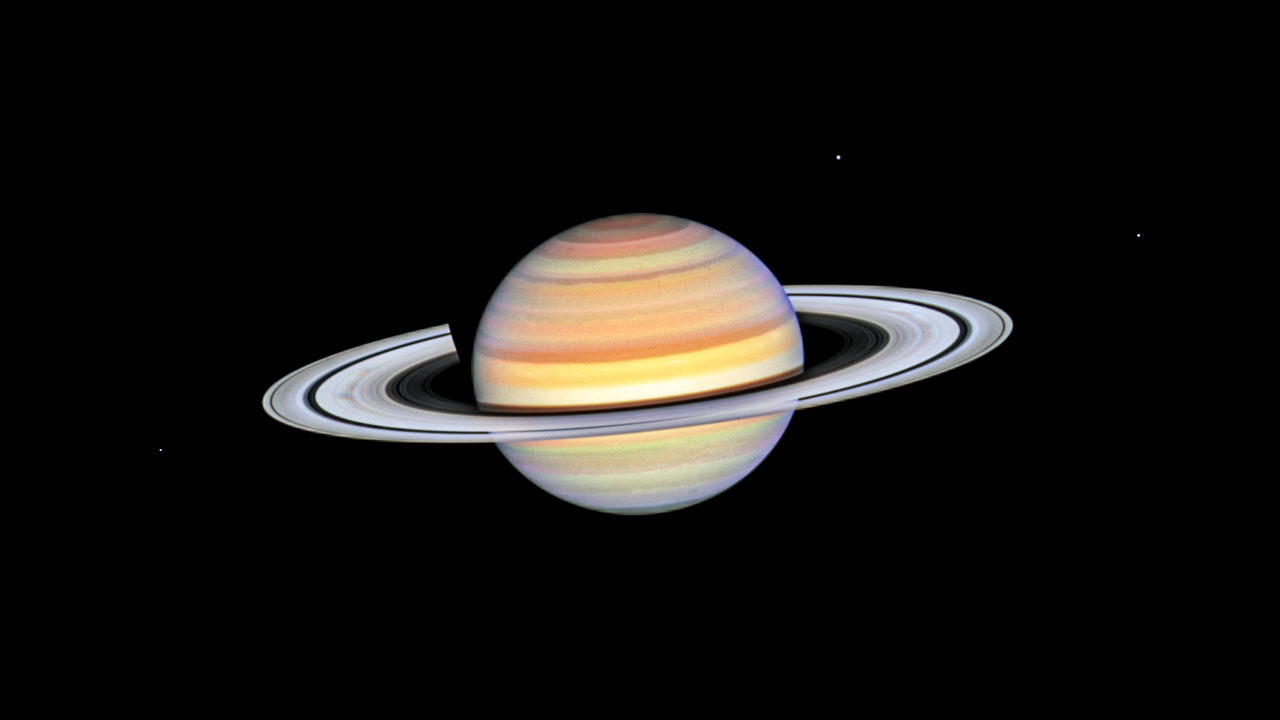New Hubble Telescope image shows mysterious spokes on Saturn's rings
The image also has a retro appearance, almost as if we're looking at it on an analog TV.
At first glance, this image of Saturn looks as if it could be a shot from an old
Star Trek" episode, thanks to its slightly grainy appearance and analog-esque glow. But this composite photo was taken on Oct. 22, 2023, by the Hubble Space Telescope — and most importantly, it captured a very interesting detail.
If you look carefully at the thick white inner band of Saturn's rings, you'll see shadowy appearances that almost look like dirty fingerprints. These are Saturn's mysterious ring spokes, transient features about the size of Earth that seem to rotate along with the rings. But ultimately, scientists have no idea what they are.
The spokes are only visible for two or three rotations around the planet before they disappear, which means catching them in action has historically been a difficult task; they were first spotted in 1981 by Voyager 2, then again multiple times during the Cassini mission, which orbited Saturn from 2004 to 2017. Now, Hubble is keeping an eye on the unusual feature as part of the Outer Planets Atmospheres Legacy (OPAL) program, which monitors the weather on our solar system's gas giants.
"The leading theory is that spokes are tied to Saturn's powerful magnetic field, with some sort of solar interaction with the magnetic field that gives you the spokes," OPAL program lead scientist Amy Simon of NASA's Goddard Space Flight Center said in a statement.
Related: Finding life on Saturn's moon Enceladus might be easier than we thought
Past Hubble images have shown that the spokes appear seasonally — Saturn's seasons each last about seven years. "We are heading towards Saturn equinox, when we'd expect maximum spoke activity, with higher frequency and darker spokes appearing over the next few years," said Simon.
That's because Saturn's tilt at the equinox orients the planet and its rings in such a way that solar winds can collide with the planet's magnetic field more forcefully, resulting in more pronounced spokes. Well, if the leading theory about the cause of the spokes is correct, that is.
Breaking space news, the latest updates on rocket launches, skywatching events and more!
Over time, scientists hope Hubble's continued observation of Saturn and its rings might help unravel the mystery of the spokes.

Space.com contributing writer Stefanie Waldek is a self-taught space nerd and aviation geek who is passionate about all things spaceflight and astronomy. With a background in travel and design journalism, as well as a Bachelor of Arts degree from New York University, she specializes in the budding space tourism industry and Earth-based astrotourism. In her free time, you can find her watching rocket launches or looking up at the stars, wondering what is out there. Learn more about her work at www.stefaniewaldek.com.

